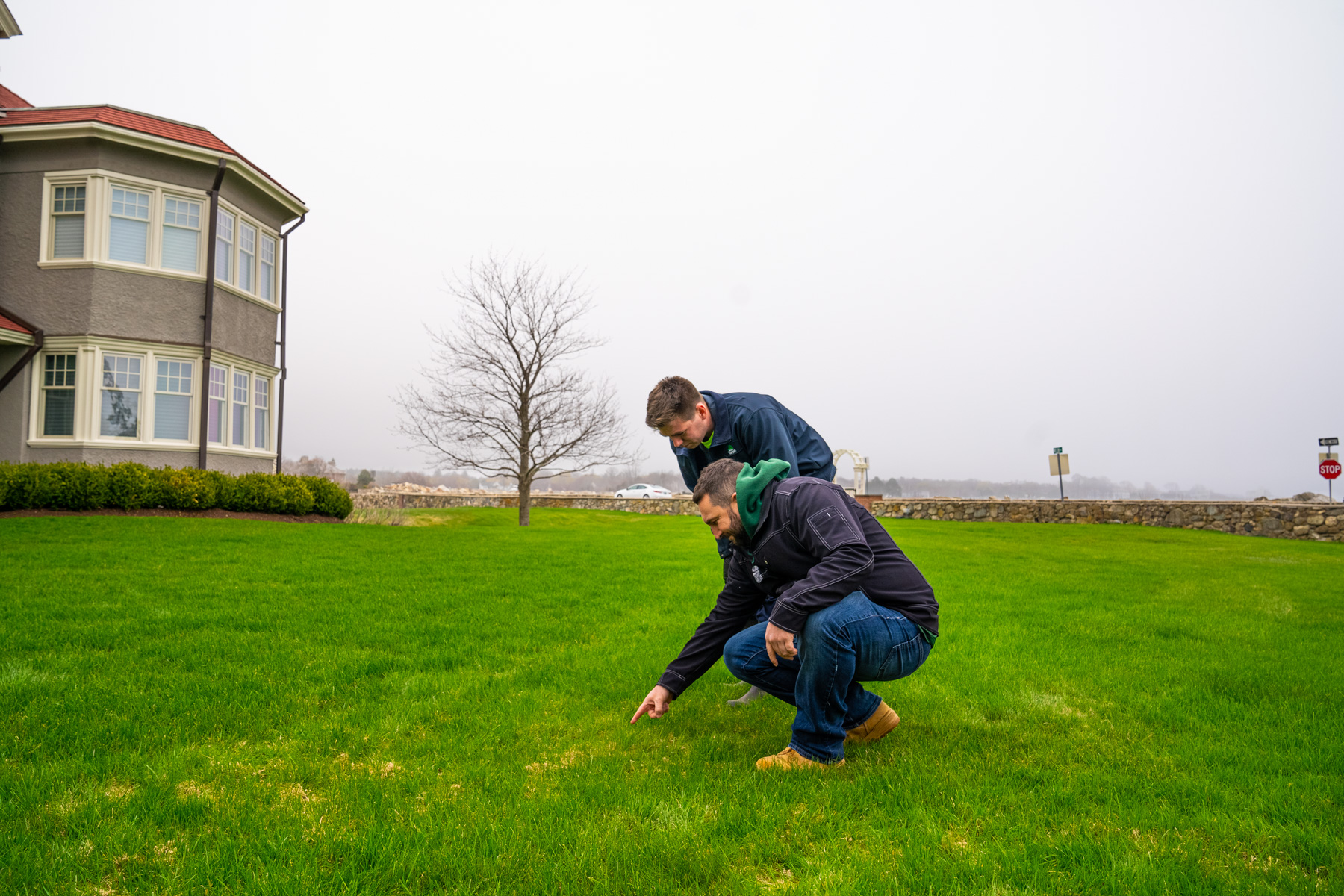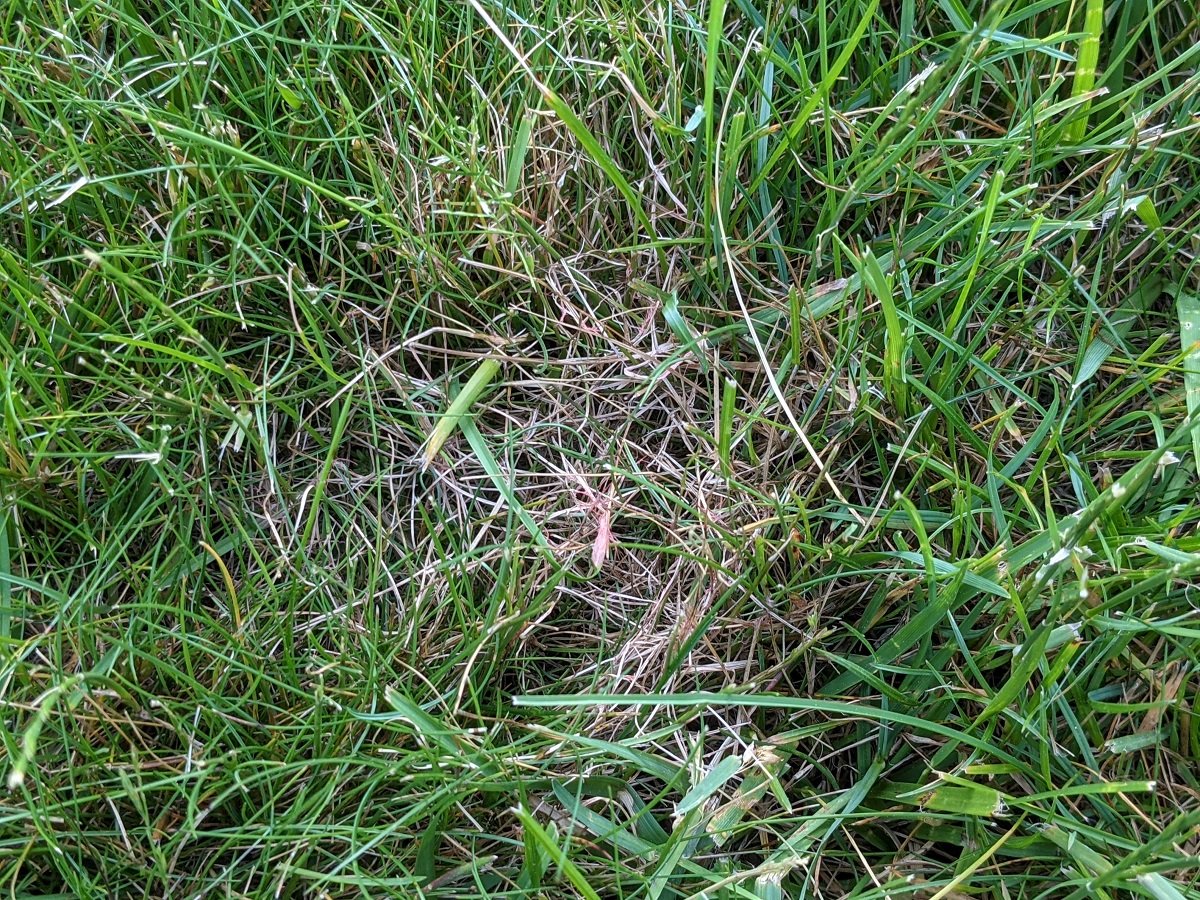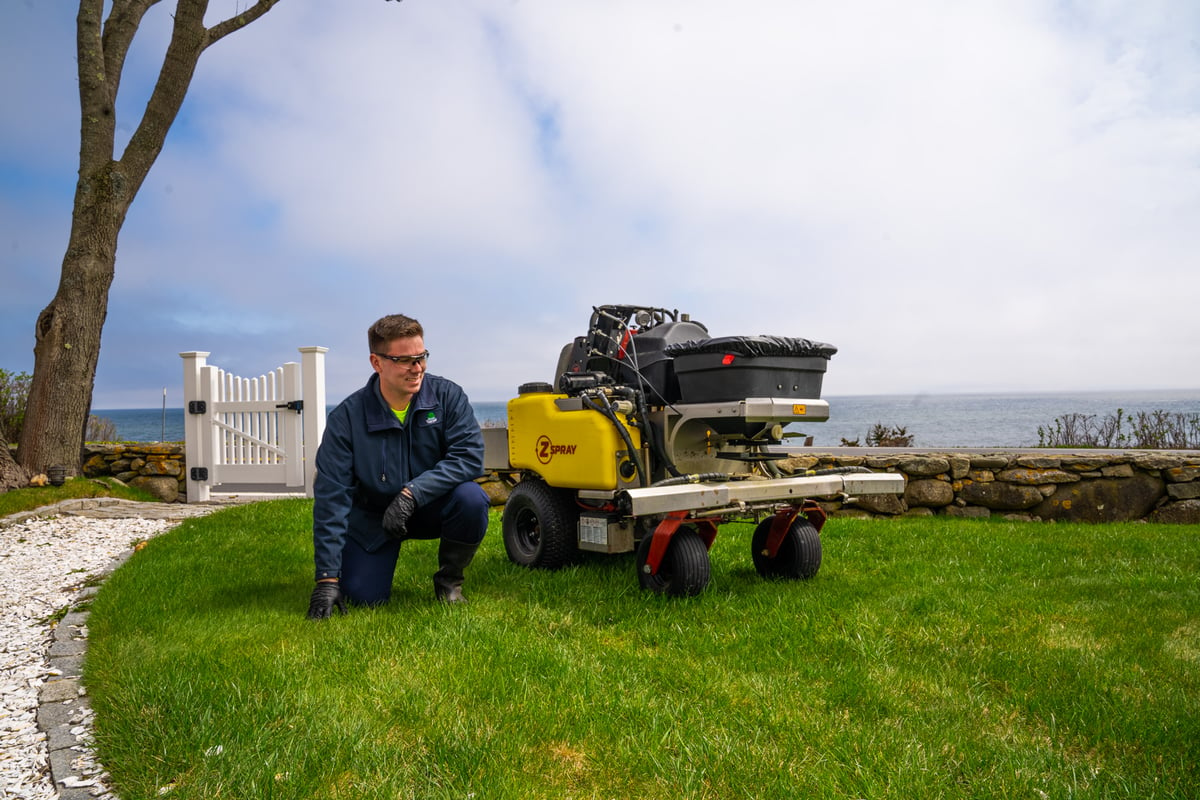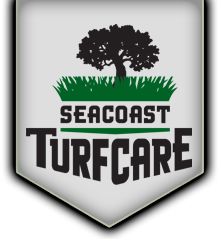
How to Identify and Treat Red Thread in Your Lawn: Tips for Homeowners in The Northeast
Lawn diseases can feel like a major setback to having the healthy and thriving lawn that you desire. But even healthy lawns sometimes face unwanted illnesses that must be overcome.
Three of the most common lawn diseases in New England are Brown Patch, Dollar Spot, and Red Thread grass disease.
In this article, we’ll look specifically at Red Thread fungus including how to identify it and what you can do if your lawn falls victim. When you make wise lawn care choices, you can protect the overall health and long-term wellness of your turf.
What is Red Thread Lawn Disease and What Does it Look Like?
Red Thread gets its name due to its appearance. When you find Red Thread fungus growing in your lawn, you’ll see a reddish/pink stringy substance in spots around the lawn.

You might also notice that the surrounding grass blades look ragged, yellow, and straw-like.
While disease identification can be pretty tricky as many lawn diseases do mimic one another, this happens to be one that is more easily identifiable. The coloring and thread-like appearance of this lawn disease make it easier to spot.
What Causes Red Thread Lawn Disease?
Red Thread lawn disease is caused by a lawn fungus called Laetisaria fuciformis, which typically shows up during rainy periods in the spring and summer. This is when conditions are optimal for fungal growth to occur. Anytime that it’s hot and wet, your lawn can be at risk for fungal growth.
To understand how fungus grows on the lawn, you first have to understand that all lawns are made up of millions of microorganisms. In other words, spores already exist on the lawn.

However, when temperatures are elevated (in the spring and summer) and when there is excessive moisture (typically via rainfall), the conditions can be just right for those spores to multiply.
If the balance gets too far out of whack, a disease can form and spread, causing your lawn problems. This is all part of what our industry calls the “Lawn Disease Triangle.”
Lawn diseases (in general) are caused by three factors:
- A susceptible host (grass species)
- A disease-causing organism (lawn fungus, in this case Red Thread fungus)
- A favorable environment (hot, wet weather)
When all three factors are present, lawn disease may persist, even on a healthy lawn.
What is the Best Red Thread Lawn Disease Treatment?
Figuring out the best course of action for any lawn disease problem often depends on how serious it is. In many cases, lawn fungus will clear up on its own as the conditions in the Disease Triangle change.
Good cultural habits are also at play here.
For instance, because lawn fungus, like Red Thread lawn fungus, thrives in wet conditions, you’ll want to avoid excessive watering. You obviously can’t do anything to control Mother Nature, but you should back off on watering your lawn if you’re dealing with a fungal issue. Consult with a lawn care professional about what is best.

While many fungal problems will clear up on their own, some lawn diseases are more aggressive than others. Even if you do “everything right,” your lawn could still end up getting a lawn disease simply because the conditions are optimal for one to grow. For that reason, we regularly inspect lawns for problems like this.
In some cases, fungicides may be warranted if the infected areas are severe. A lawn care professional can apply commercial-grade products that will help stop fungus growth.
These can be applied to stop the spreading of the disease. It’s important to note that fungicides won’t cure already-affected grass. They’ll just stop the fungus from spreading further into the lawn.
If you have areas of your lawn that have been destroyed by lawn disease, you’ll need to implement restoration steps to fill these in. If you have just some bare patches or thin areas, aeration and overseeding can help fill these in.
.jpg?width=1200&height=900&name=aeration%20holes%20plugs%20and%20seed%201%20(1).jpg)
In most cases, this is enough to help restore your lawn.
However, if your lawn has truly been ravaged and is missing large areas of turf, you might consider sodding.
Healthy Lawn Habits to Keep Red Thread Lawn Disease at Bay
As we mentioned, even healthy lawns can be attacked by lawn disease. You can do all the right things and still end up with a lawn fungus growing simply because the conditions are right.
That being said, there’s no question that a healthy lawn will fare better against disease than one that is already struggling.
A lawn disease like Red Thread is going to spread much more rapidly (and be much more destructive) if your turf is already in bad shape.
For that reason, healthy lawn habits can make a difference in helping prevent your lawn from being ravaged by disease. This includes investing in professional lawn care services. It also includes best practices like proper watering and proper mowing.
Your Partner in Lawn Care Success in NH, MA, and ME
Lawn disease can be frustrating for homeowners, particularly if they feel that they’re on their own in figuring out how to deal with it. But at Seacoast Turf Care, we want to be your partner in success. We know that a healthy lawn is important to you and we want to help. We provide lawn care in Southern NH, Northeastern Massachusetts, and Southern Maine.
While lawn diseases are sometimes inevitable, when you are already partnered with a pro, you can feel confident that they are looking out for the health of your lawn. The earlier that trouble is spotted, the better.
Lawns can be a lot of work, but you’re not on your own. We’re here to help with any issues that arise on your journey to having a healthy lawn.
Want to learn more about what makes us a great choice for your lawn care needs? At Seacoast Turf Care, we service NH towns near Stratham, North Hampton, Exeter and many more. Get lawn care pricing for your Southern NH, Southern Maine, or Northeastern Massachusetts property.



